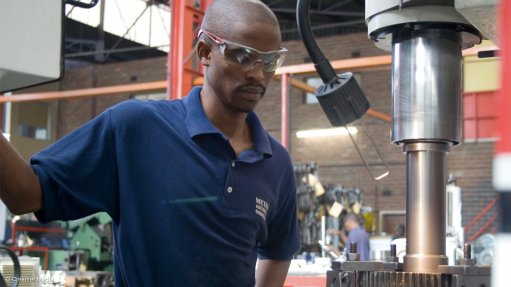
South Africa’s declining manufacturing sector, coupled with the improving quality of automotive components being manufactured in China, has resulted in a greater demand for the cheaper Chinese automotive components, import and working capital specialist Blue Strata Trading sales head Greg Cline tells Engineering News.
Further, the weakening rand and vola- tile global markets are placing local automotive component manufacturers under significant pressure to remain competitively priced.
“Europe is South Africa’s largest automotive-component export destination and our industry is being negatively impacted on by the ongoing eurozone economic crisis,” he notes.
Cline says the focus on sourcing components from local manufacturers has reduced the risks associated with exchange rate fluctuations.
Government has set a target of manu- facturing 1.2-million vehicles locally by 2020 in the face of a decline in the domestic manufacturing sector’s contribution to the economy, which has seen manufacturing shrinking slowly, from accounting for 20% of the economy in 1995, to the current 17%, Investec chief economist in South Africa Annabel Bishop said recently.
However, unstable labour markets could ultimately impact negatively on South African automotive component manufacturers’ ability to secure new or additional contracts.
“About 28 000 people are employed by original-equipment manufacturers (OEMs), with the majority belonging to trade unions, such as the National Union of Metalworkers of South Africa or the Motor Industry Staff Association, which have, in the past, organised major strikes that have crippled the industry for significant periods,” he adds.
Cline points out that OEMs in South Africa tend to hold significant bargaining power within the automotive sector, which places considerable pressure on component manufacturers to comply with OEM price demands.
He adds that OEMs also have government support, whereas the automotive component manufacturers are struggling to stay in business, owing to the rigid margins set by OEMs.
“Government incentives are in place to try to protect local automotive component manufacturers. However, there is much scepticism as to whether these measures will be effective in saving the local automotive component industry,” Cline cautions.
Government has placed great emphasis on local industry incentives, such as the Automotive Production and Development Programme, which aims to provide assistance to the OEMs to become more competi- tive in the global market through exports.
“South Africa has a vibrant trading history, owing to previous automotive incentive regimes, which has set a global benchmark for South Africa as a trading platform,” highlights Cline.
Further, he notes that the bulk of automotive components entering South Africa are imported by OEMs and, subsequently, exported after a value-adding process is undertaken.
OEM automotive components, followed by replacement parts, comprise the majority of automotive component imports to South Africa, says Cline.
“These include tyres, engine parts, brakes, drive axels, automotive tooling and leathers,” he says, adding that about R70-billion of automotive components were imported into South Africa in 2011.
Cline points out that the largest exporters of automotive components into South Africa are Germany and Japan because German and Japanese vehicles are popular in South Africa.
According to the Automotive Industry Export Council’s 2011 Automotive Export Manual, Germany exported about R30.1-billion in automotive components to South Africa, while Japan exported automotive components worth about R17.9-billion to South Africa.
However, in the past five years, imports have been challenged by the South African automotive industry, as imports have become heavily incentivised to promote a competitive trading environment and support businesses to create new employment opportunities, says Cline.
“These incentives have brought about a shift in focus and aim to promote local manufacturing of automotive products,” he concludes.